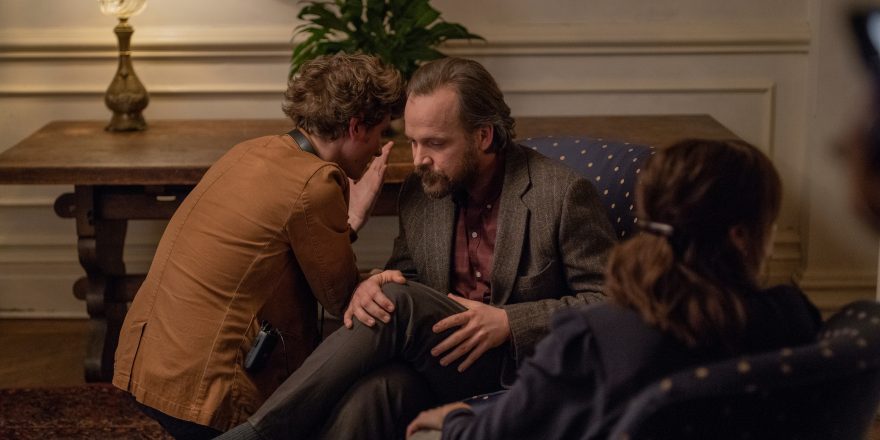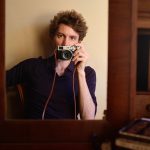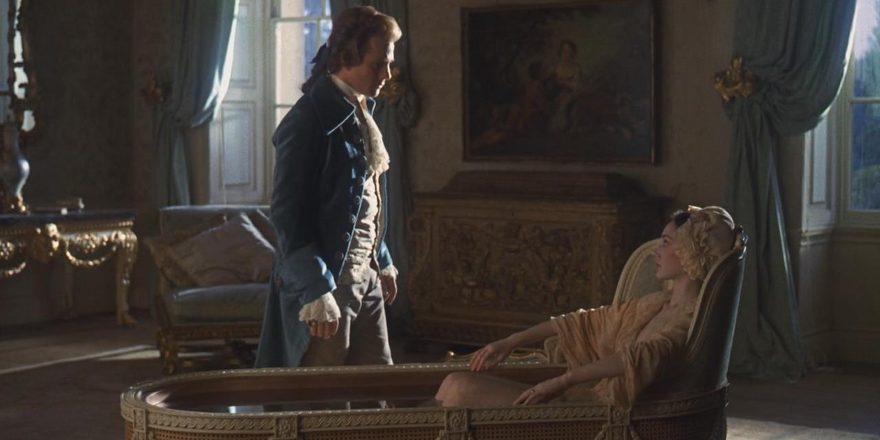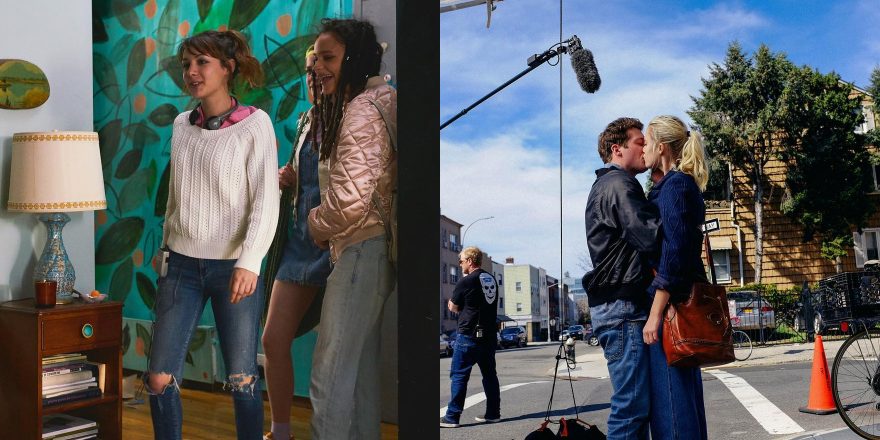It takes a lot of tenacity to get a feature made. And a whole lot of time and patience as well. On the eve of the theatrical release of my debut feature film, The Sound of Silence, I’ve been reflecting on the calendar year I got to spend making it, but also on the long timeline that it took to get there.
The origins of the movie go back exactly eight years, to around Labor Day of 2011, when I received an email from my friend and collaborator Ben Nabors. He sent me a long document he’d written called Palimpsest, which contained some short stories involving characters with invented professions in New York City. One of these was known as “the house tuner,” who would soon become the protagonist in the short film Ben and I then wrote together, Palimpsest, and ultimately, my first feature film.
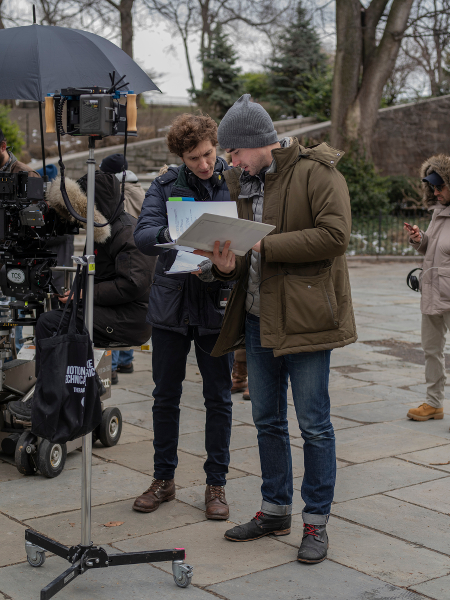
After Palimpsest premiered at the 2013 Sundance Film Festival, Ben and I spent the rest of the year working on the feature-length screenplay, and by early 2014 we’d received support from some of the major indie filmmaking labs and institutions (along with plenty of the usual rejections, too). It seemed like we were right on track to make this motion picture — and soon. Everyone knows that independent features can have a lot of starts and stops, sometimes taking years to get off the ground, and as I slowly learned over the next four years, our process was by no means going to be an exception.
The script, which was a slow adult drama about a methodical, sound-obsessed scientist who lives in a basement, wasn’t resonating with potential investors as much as I’d hoped. But as time passed, my determination to get it made didn’t. I had a vision of what this movie was going to be that I couldn’t shake. From my perspective, it was never a question of if it was going to happen, it was always when. I personally believe this is a vital mindset to have, and I’ve often found that if I stick with something long enough, I can usually will it into being (or at least that’s how the magical thinking of my OCD mind tends to make sense of it all).
Two years passed in this perpetual state, before I met some fellow magical thinkers over at Anonymous Content. They believed in the material, and encouraged me to identify actors I wanted to work with. I had been dreaming that Peter Sarsgaard would make the perfect house tuner for some time, and now that I was finally able to get him the script, to my amazement, it was only a matter of days before Peter and I were sitting down for lunch (at what is now my favorite restaurant in Brooklyn). He loved the script and his genuine excitement about the role rivaled mine. I left that meeting knowing (in my mind, at least) that the film was finally going to happen — and soon. There was just the small issue of financing to work out, as at that moment we had not a cent.
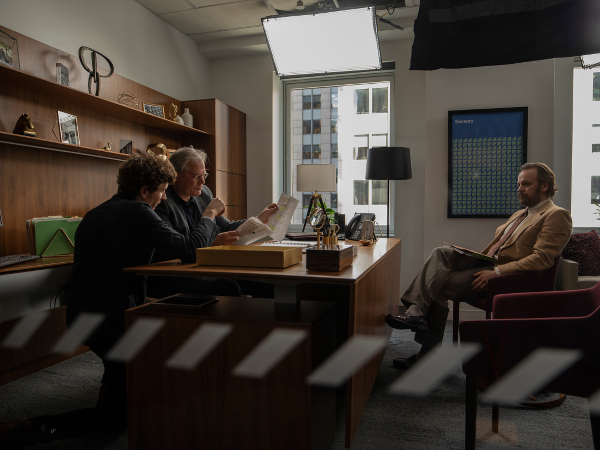
With my ideal lead actor on board, my determination (or perhaps “obsession” would be more accurate) to get the movie made only escalated. New York indie film vet Mike Prall, who had recently come on board as a producer, had us commit to projected production dates on a calendar, and set a timeline for us to raise the budget we needed. Although it seemed like an eternity until we were going to actually “make the movie,” Mike frequently reminded me that this was all part of “making the movie.” It’s a big leap of faith you have to take at this point, but you need to keep pressing on with the belief that it’s going to work, keeping those imaginary dates clear, and start mentally preparing for what will likely be the most exhausting and fulfilling period of your life to date. Yet at the same time, the closer we got (Rashida Jones signed on!, key collaborators were attached, financiers and more grant support started to come through), the balance of keeping it all together seemed to grow more precarious, and I had to pretend like it wouldn’t all fall apart at any moment.
But with our projected production timeline closing in, I used the last few months to do everything I could to mentally prepare myself for game day. I read some classics, like Sidney Lumet’s Making Movies, and found an old copy of Jerry Lewis’ The Total Film-Maker. I also invited Peter over to my apartment so that we could make an audio recording of the script. After reading this story on paper for so many years, I thought it would be a valuable exercise to start “hearing” it, and to begin interacting with the narrative beats in a more tactile way. By the end, I had an old fashioned radio drama-version of the movie. (If the film fell apart now, maybe I could at least make a podcast!) It didn’t take me long to turn that into a visual animatic that I created on an editing timeline, with shot descriptions and location photos, so that I could start scrubbing through and “watching” this movie that I had spent so long constructing in my head. All there was left to do now was to simply replace all the shot descriptions with the actual moving images.
In January of 2018, pre-production officially got underway. Washington Square Films welcomed our growing team to move in and set up shop in their bullpen on Bowery. Wardrobe racks and art department boxes steadily accumulated. I’ll forever be nostalgic for those nine weeks: research field trips to the New York Public Library with production designer Nora Mendis; deciding on Peter’s blazers with costume designer Megan Stark Evans; awaiting the daily returns of the typically rain-soaked location manager Giovanni Ferrari, to hear which locations were either impossible to get or too expensive; reveling in prop master Stephen Phelps’ perpetually grease- and paint-covered hands, a result of whatever new prop he’d fabricated overnight; shadow-boxing all the camera set-ups with cinematographer Eric Lin and first assistant director Eric “Frenchy” LaFranchi; and commuting home with my good friend and producer (and neighbor) Eddy Vallante, our heads spinning from how wild this whole experience was.
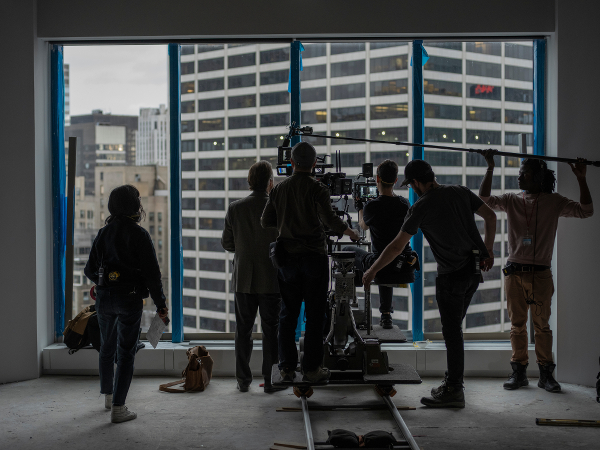
As satisfying as the preparatory process was, this period still came with all the stress of financing, which we were still raising. One of our darkest days came just five weeks before shooting was supposed to commence, when we nearly had to shut down because of a budget shortfall. I am, however, of course, fortunately able to write and reflect on this all now, forever grateful to the producers and financiers who were able to swoop in at the last minute and keep our ship afloat.
With financing more secure, my latest fear (there’s always a new one) was getting sick or not being 100 percent on shoot days, so I did everything I could to stay as sharp as possible. I’m not a heavy drinker, but I removed alcohol from the equation entirely. I was busier than ever, too, and my diet became strictly grab-n-go essentials: granola bars, Emergen-C packets, and a whole lot of ginger shots. I lost exactly 21 pounds during the stressful weeks leading up to production, equalling a pound for every day of our ambitious 21-day shoot schedule. My family was seemingly worried about this. Before we began shooting, my father-in-law flew in from the West Coast for a visit, and the very first thing he did upon arrival was to escort me across the street for a large Italian dinner.
Once shooting arrived in March – exactly one year to the week since Peter and I first sat down for lunch – all my preparation anxiety disappeared. Everything that could be prepared was ready, or as ready as it would ever be. We had a very small budget, but I wanted the scope to feel bigger, which meant covering a lot of ground in our limited number of shoot days. The schedule was an intricate and weather-dependent puzzle. If we weren’t starting the day in a new location, we were likely doing a company move by the end of it. Given the number of locations we had to cover, we had less time to block and shoot the scenes each day. I would wake up from a deep sleep nearly every night only to find myself standing in some odd corner of my bedroom, fussing over where to put the imaginary camera for scenes that didn’t even exist — an exercise I’ve since termed “sleep blocking.” Even in the limited hours designated for rest, I couldn’t take my mind off the movie.
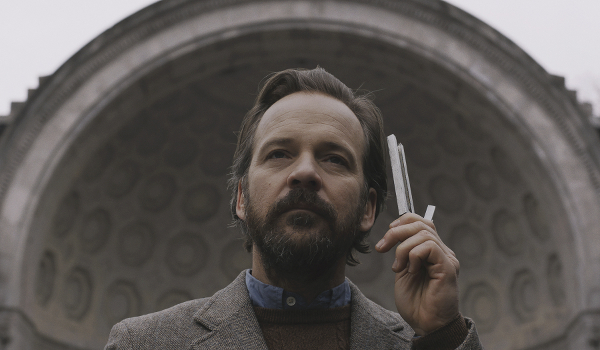
I got some needed relief in the final few days of production, when I was able to save on my commute time and simply walk to set (a secret fantasy I’ve had for years while living in New York). The sets that were constructed for a central location in the story — Peter’s home and “tuning lab” — were located in an old warehouse along the East River in Greenpoint, a mere two blocks from my apartment. And finally, in late April, we wrapped production. We started the shoot bundled up in wool hats and scarves and winter coats, and by the last day, the crew was wearing short sleeves.
Suddenly, this large, semi-autonomous ship was whittled down to just me and my editor locked away in a tiny dark room for five months. After the last day of filming, it took me several weeks to properly calm down. I still had the production-schedule adrenaline, and I was ready to run the edit in similar 16-hour shifts. My patient editor, Matthew C. Hart, would remind me constantly that this was “a marathon, not a sprint.” Eventually, I acquiesced and eased into a more healthy routine that allowed room for proper lunches and restroom breaks.
I kept working on the movie nearly every day until the end of the year. And this past January, exactly six years from when we premiered the short film at Sundance, we returned there with my feature debut, The Sound of Silence. And while it will forever be one of the greatest thrills of my life, and I am so grateful for all the people who came together to make this movie, I’m also really happy to close the books on it now, too. With a little time away, and the separation anxiety from the project that has been with me for the better half of the past decade finally wearing off, I find that all I want to do now is get back at it. They say your second feature can be harder to get made than the first, but I’m excited to bet on the odds and do it all over again — and soon.
Behind the scenes images by James Chororos.


